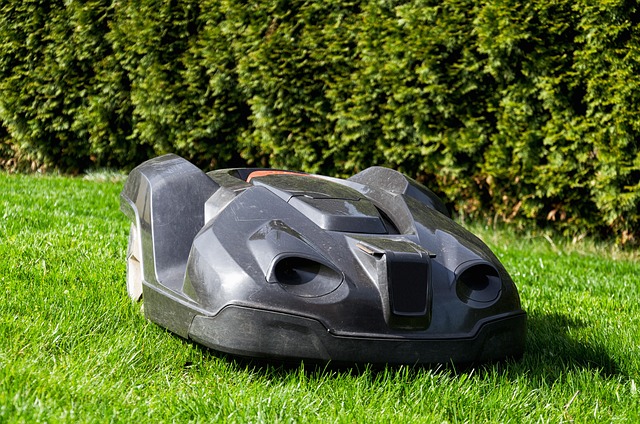TL;DR:
Seasonal fertilization and pruning are vital for plant health, beauty, and disease resistance. Optimal timing is during dormancy (late winter/early spring) with specific tools like hand pruners and saws. Techniques involve removing dead/diseased branches and clean cuts at nodes to stimulate regrowth. Fertilization supports new growth in spring, leaf density in summer, and root strength in fall, promoting robust vitality year-round. Understanding plant needs (e.g., maples, hydrangeas) guides selective pruning and balanced fertilization for optimal health and longevity.
Seasonal pruning and trimming are essential practices for maintaining plant health and vitality. Understanding the optimal times to cut back your plants, whether it’s spring, summer, or fall, can dramatically impact their shape and overall growth. This article guides you through the art of pruning, offering insights on when and why to trim, effective tools and techniques, and the crucial role of seasonal fertilization. We also delve into specific pruning needs for common plants.
Understanding Seasonal Pruning: When and Why to Trim
Understanding seasonal pruning is key to maintaining healthy and vibrant plants. The timing and frequency of trimming depend on various factors, including the type of plant, climate, and desired shape. Generally, most plants benefit from light pruning during their dormant season, typically in late winter or early spring, to remove dead or diseased branches and encourage new growth. This process is often referred to as seasonal fertilization and pruning, as it not only shapes the plant but also promotes robust vitality.
Regular trimming at the right time of year allows plants to allocate energy efficiently, fostering strong roots, lush foliage, and vibrant flowers or fruits. It helps control the plant’s size and structure, ensuring it aligns with your landscape design goals. Moreover, seasonal pruning can enhance a plant’s natural beauty, improve its overall health, and make it more resistant to pests and diseases.
Tools and Techniques for Effective Pruning
Pruning is an art that requires the right tools and techniques for optimal results. The right equipment makes the task easier, safer, and more precise, ensuring your plants retain their natural beauty. For most gardening tasks, a sharp pair of hand pruners is all you need—choose ones with comfortable grips to minimize strain during prolonged use. For larger branches, a pruning saw is essential; look for one with a curved blade for clean cuts.
When it comes to techniques, timing is key. Seasonal fertilization and pruning go hand in hand; pruning should be done during the dormant season to prevent excessive bleeding, while seasonal fertilizers can promote new growth post-pruning. Start by removing any dead or diseased branches, then trim back overgrowth to maintain the desired shape. Always make clean cuts just outside the node (the point where a branch joins another) to encourage new growth.
The Role of Seasonal Fertilization in Plant Health
Seasonal fertilization plays a crucial role in maintaining plant health and promoting optimal growth, especially when combined with regular pruning practices. By understanding the specific nutritional needs of plants during different seasons, gardeners can ensure their plants receive the necessary nutrients for robust vitality. During spring, for instance, many plants are actively growing, making it an ideal time to fertilize with a balanced mix to support new foliage and flowering. Summer fertilization may focus on promoting lush leaves and overall plant density, while fall applications aim to strengthen roots and prepare plants for winter dormancy.
Regular seasonal fertilization, along with targeted pruning, helps shape plants and maintain their natural beauty. This practice encourages strong stem growth, prevents leggy or sparse plants, and ensures a vibrant, healthy landscape throughout the changing seasons. When done correctly, these techniques not only enhance the aesthetic appeal of garden spaces but also contribute to the overall health and longevity of various plant species.
Common Plants and Their Specific Pruning Needs
Different plants have varying requirements for seasonal fertilization and pruning, so understanding their specific needs is key to maintaining optimal shape and vitality. For example, ornamental trees like maples and birches often benefit from selective pruning during late winter or early spring to encourage dense branching and a balanced form. This can involve removing dead or diseased branches, thinning crowded areas, and shaping the tree’s crown.
On the other hand, shrubs such as hydrangeas and boxwood require regular trimming to control growth and promote bushier, more compact habit. Timing is crucial here; late winter pruning for deciduous shrubs sets them up for healthy new growth in spring, while evergreens may be pruned slightly later in the season to avoid excessive dieback. Seasonal fertilization, often with balanced nutrient blends, can further enhance their vigor and floral display.
Seasonal fertilization and pruning are essential practices for maintaining plant health and vitality. By understanding the optimal times to trim and the specific needs of various plants, you can ensure a lush, well-shaped landscape year-round. Effective tools and techniques, combined with appropriate seasonal fertilizers, empower gardeners to nurture their plants and create a beautiful outdoor space that thrives.
